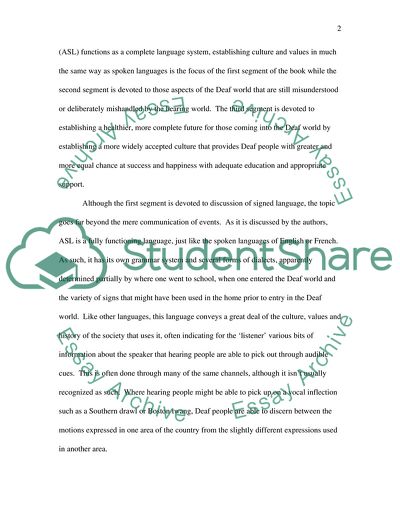Cite this document
(Analysis of A Journey into the Deaf-World Book by Harlan Lane, Robert Report/Review, n.d.)
Analysis of A Journey into the Deaf-World Book by Harlan Lane, Robert Report/Review. Retrieved from https://studentshare.org/social-science/1704409-a-journey-into-the-deaf-world-by-harlan-lane-robert-hoffmeister-ben-bahan
Analysis of A Journey into the Deaf-World Book by Harlan Lane, Robert Report/Review. Retrieved from https://studentshare.org/social-science/1704409-a-journey-into-the-deaf-world-by-harlan-lane-robert-hoffmeister-ben-bahan
(Analysis of A Journey into the Deaf-World Book by Harlan Lane, Robert Report/Review)
Analysis of A Journey into the Deaf-World Book by Harlan Lane, Robert Report/Review. https://studentshare.org/social-science/1704409-a-journey-into-the-deaf-world-by-harlan-lane-robert-hoffmeister-ben-bahan.
Analysis of A Journey into the Deaf-World Book by Harlan Lane, Robert Report/Review. https://studentshare.org/social-science/1704409-a-journey-into-the-deaf-world-by-harlan-lane-robert-hoffmeister-ben-bahan.
“Analysis of A Journey into the Deaf-World Book by Harlan Lane, Robert Report/Review”. https://studentshare.org/social-science/1704409-a-journey-into-the-deaf-world-by-harlan-lane-robert-hoffmeister-ben-bahan.


